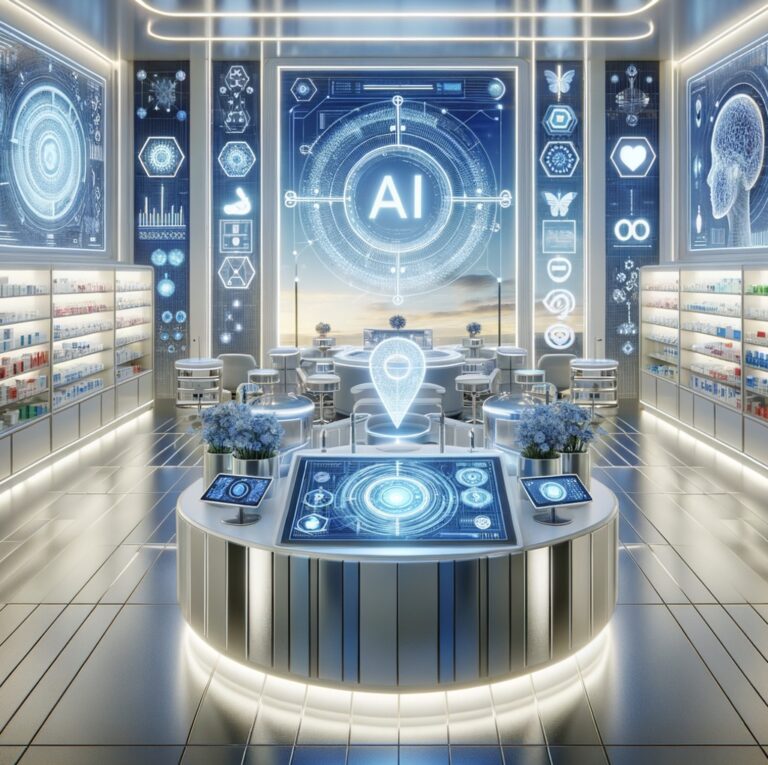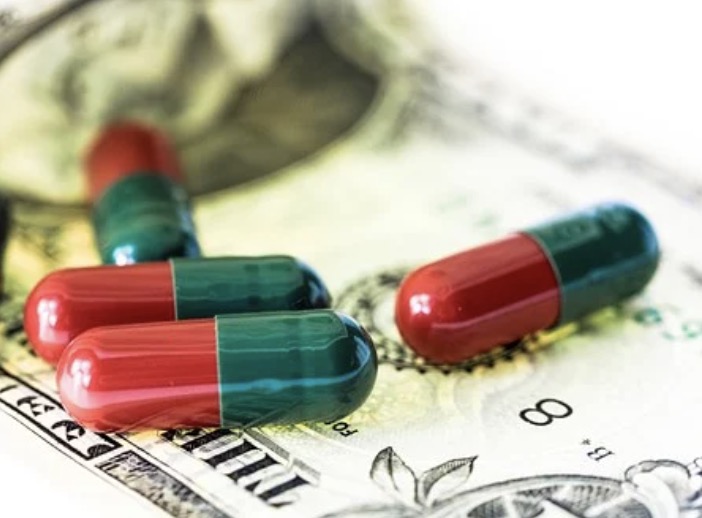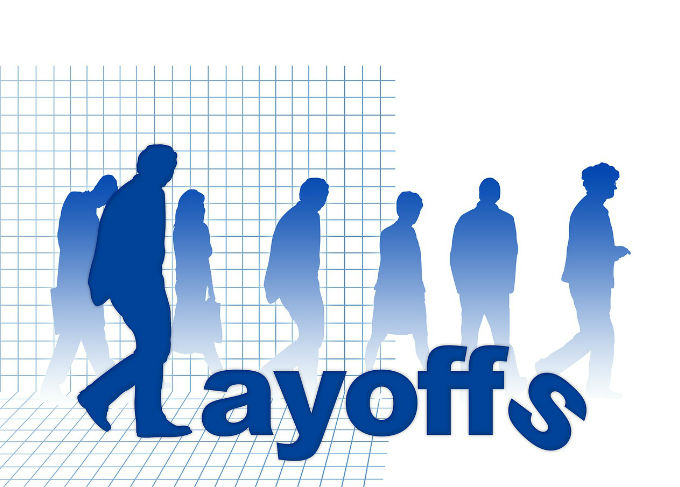
How Pharma Companies Can Build Trustworthy AI Agents
In an industry where a single miscalculation can impact millions of lives, pharmaceutical companies are witnessing an unprecedented transformation through AI agents – autonomous systems

In an industry where a single miscalculation can impact millions of lives, pharmaceutical companies are witnessing an unprecedented transformation through AI agents – autonomous systems

Healthcare innovation is now at a crossroads, where the pursuit to make revolutionary strides forward is matched only by the challenge of making tools that

Everyone does digital marketing, and everybody is doing more of it these days. Consider these statistics: According to Cropink reports that over 376 billion emails

Your next job, loan rejection or course homework assignment may be assessed by an algorithm that works round the clock, never rests, never explains and never

Shockingly, many layoff trackers exist in the pharma world. Each paints the same picture: patent cliffs and turbulent market conditions have led to pharma budget

The century-old model of molecular intervention, the paradigm undergirding the pharmaceutical industry, is giving way to a new reality – a software code that heals.

Market research in healthcare has already greatly benefited from the digital revolution, and artificial intelligence (AI) is already being used to reshape market research, from

Today’s businesses cannot afford to ignore AI — it has become a matter of survival. Those who won’t adopt AI are in danger of becoming

Healthcare is changing at an unprecedented rate. Exciting new technologies and techniques have opened the door to a host of novel medical interventions and approaches.

In the shadow of the worldwide healthcare market is a paradox that contradicts all traditional market logic: 300 million patients around the world suffer from

Personalisation has become a key and critical component of modern marketing. Greater personalisation makes for a more enjoyable and relevant customer experience, while at the

AI is not just transforming industries; it is also transforming the way we compete. What used to be a luxury is now table stakes, forcing

Augmented reality (AR) technology has been making waves in various industries, including the pharmaceutical industry. It is being used with artificial intelligence (AI) to radically

When 9 out of 10 drugs fail in clinical trials, after spending billions of dollars, the basic economics of the drug industry require an intervention.

When asked what made him such a successful hockey player, Wayne Gretzky once famously answered, “I skate to where the puck will be, not where

The pharmaceutical industry stands at the precipice of its most consequential revolution since the advent of digital therapeutics. Across the sector, industry giants—are quietly but

Most pharmaceutical companies have long since accepted that AI is and will continue to be essential to maintaining a competitive advantage. The big question facing

The pharmaceutical industry is fighting a silent, devastating epidemic, with counterfeit drugs pouring into global supply chains at an alarming and unprecedented rate. With counterfeiters

Nanobots hold tremendous promise for revolutionizing drug delivery and advancing personalized medicine. Nanobots are microscopic robots that are engineered at the nanoscale to perform highly

Introduction The life sciences sector is undergoing a silent revolution—and its epicenter isn’t in R&D labs but in medical affairs. While AI reshapes drug discovery,

Drug launch is a critical and complex component in the parma value chain. Now more than ever, pharmaceutical companies face significant challenges. Covid-19 has changed

In boardrooms and break rooms alike, generative AI has prompted a profound organizational paradox: great potential against existential anxiety. Radiologists watch as AI diagnoses tumours

What if the next Nobel Prize-winning discovery doesn’t come from a human eye, but from a synthetic one? Discovery has always been limited by what

Industry 4.0 has arrived, ushering in a new era of direct data exchange and automation in economies and markets globally. This new world is manifesting

AI is reshaping pharma—but not in the way many expected. The industry’s widespread adoption of AI tools has yet to move the needle on clinical

Innovation drives success, but innovation initiatives succeed only when they align with the company’s goals, vision and culture. And that vision starts at the top.

What Is Living Intelligence in AI and Why Does It Matter for the Future? In the rapidly changing world of pharmaceuticals today, AI systems that

It is good to finally see that big data and Artificial Intelligence analytics are now on the pharma C-Suite agenda with a recent survey by NewVantage Partners showing that 85.5% of major corporations are working on big data initiatives. This is because many companies have now measured and proven the value of these for growing their pharma brands and companies.

Chronic diseases have emerged as one of the most significant public health challenges of the 21st century. According to the World Health Organization, chronic diseases

Collecting and analysing information about our world is the best tool we have for solving big problems, be they environmental, social, or medical. Large datasets

In recent years, the convergence of artificial intelligence and biology has sparked a revolutionary transformation in the life sciences. As AI technology integrates with biological

Rare diseases develop complex problems in healthcare systems. The world’s 7,000-8,000 rare diseases collectively affect more than 300 million people globally although each disease affects

In the crucible of modern drug development—where a single molecule’s journey from lab to patient spans an average of 12 years and $2.3 billion—AI has emerged

The clinical trial ecosystem—a $90 billion engine driving medical innovation—is struggling under the burden of its own complexity. Despite significant advancements in therapeutic science, a

Patient experience has become the heartbeat of modern healthcare. No longer limited to clinical outcomes, it now encompasses every touchpoint in a patient’s healthcare journey.

In the realm of pharmaceutical innovation, a paradigm shift is underway, driven by the emergence of AI Centaurs and AI Cyborgs. These hybrid entities, blending

Introduction Generative AI is revolutionizing the pharmaceutical industry, offering unparalleled opportunities to accelerate drug discovery, optimize clinical trials, and refine patient care strategies. Yet, amidst

In the high-stakes world of pharmaceuticals, AI holds incredible promise.It offers the potential to speed up drug discovery, improve clinical trials, transform patient care, etc.

In an era where technology’s relentless advance is pushing the boundaries of what’s possible, the pharmaceutical industry finds itself at the threshold of a transformative

In the rapidly evolving pharmaceutical landscape, Generative AI stands as both a transformative force and a test of the industry’s readiness for change. As 2025

Healthcare inequalities remain a pervasive challenge worldwide, manifesting in disparate access to medical services, varying quality of care, and unequal health outcomes among different populations.

In the pharmaceutical and healthcare industries, the opinions of a select few can profoundly impact the fate of a new treatment or therapy. Key Opinion

The pharmaceutical industry stands at a pivotal moment, where the pursuit of growth and the imperative of cost optimization have become intertwined. Seasoned executives, accustomed

The pharmaceutical industry relies heavily on market research and insights to develop and commercialize new therapies. These insights inform critical decisions around unmet patient needs,

In the rapidly evolving landscape of pharmaceutical research and development, Large Language Models (LLMs) have emerged as powerful tools for drug discovery, literature analysis, clinical

The world is grappling with a burgeoning mental health crisis, with an alarming 1 in 4 individuals experiencing a mental disorder each year. This staggering

Pharmacies, long considered pillars of the healthcare system, are often plagued by long queues, inefficiencies, and slow processes that frustrate patients and challenge pharmacists. Despite

The pharmaceutical landscape is undergoing a seismic shift, propelled by the unstoppable force of generative artificial intelligence (Gen AI). This revolutionary technology is not just

In the fast-paced world of technology, the ‘build fast, fail fast’ approach has become a mantra for many startups and tech giants. This methodology, characterized

Biological computing, an emerging interdisciplinary field at the intersection of biology and computer science, is poised to revolutionize the pharmaceutical industry. At its core, biological

In the pharmaceutical industry, where understanding patient and HCP sentiment and experiences is paramount, we are drowning in a sea of data. Every minute, millions

Big Tech giants like Google, Amazon, Microsoft, Apple and IBM have long dominated sectors like consumer technology, cloud computing and artificial intelligence. These companies have

Back in 2021, many people died and the US economy suffered losses worth $50-300 million each day – both from people refusing to get COVID-19

Imagine a hospital where all the computer systems can talk to each other seamlessly, schedule appointments, and keep track of medical records without human intervention.

The U.S. Food and Drug Administration regulates certain AI/machine learning-based medical devices through its premarket review and approval pathways. Any software or device that utilizes

Proteins lie at the core of all biological functions and are implicated in various diseases. Developing effective drugs and vaccines targeting disease-causing proteins or modulating

AI Models and Approach Analysis A) Determining the optimal algorithms and models for the project Selecting the right algorithms and models is crucial for the

The pharmaceutical industry is at the forefront of innovation, constantly pushing the boundaries to improve patient care and advance scientific breakthroughs. In this era of

The pharmaceutical industry is on the brink of transformation due to rapid advancements in artificial intelligence. AI holds the potential to revolutionize drug discovery, development,

Synthetic data and digital twins are transformative technologies set to revolutionize the pharmaceutical industry by reshaping research and clinical trials. Synthetic data involves computer-generated datasets

The pharmaceutical industry, a cornerstone of modern healthcare, stood at the edge of transformation. The question at the forefront of industry minds is whether pharma

Over the past decade, artificial intelligence (AI) has become deeply integrated into various facets of pharmaceutical and medical research, as well as clinical practice. Fueled

Generative Artificial Intelligence (AI) is a transformative technology that has been reshaping the landscape of artificial intelligence since 2014. Generative AI models exhibit the capacity

In today’s fiercely competitive pharmaceutical landscape, companies grapple with the pressing need to amplify sales figures while ensuring optimal performance from their sales teams. The

The looming threat of patent cliffs has long posed a significant challenge for pharmaceutical companies. In the new patent cliff coming, the collective loss is

The pharmaceutical industry has seen significant growth and change in recent decades due to advancements in scientific research, leading to the development of life-improving drugs

In the corridors of pharmaceutical leadership, a pivotal moment emerges as CEOs stand before a crucial crossroads. Here, tradition meets the transformative force of Artificial

The pharmaceutical industry stands as a vanguard in the pursuit of better health, tirelessly striving to unearth novel therapies, treatments, and cures that can elevate

Real-world data (RWD) emerges as a transformative force, wielding the potential to revolutionize the way we understand and utilize medical information, especially in the context

In part 1 of this series (click here to read) we covered: The Importance of AI in Pharma The Critical Need for a Strategic AI Blueprint The

The Importance of AI in Pharma The pharmaceutical industry is currently witnessing a transformative era with the advent of artificial intelligence (AI). With its remarkable

AI in pharma has brought significant advancements in mapping the patient journey and improving patient experiences. Patients have diverse needs, follow non-linear paths, and interact

In an era where the global pharmaceutical industry is grappling with mounting financial challenges, the need for innovative solutions has never been more pressing. The

In today’s rapidly advancing world of healthcare, the intersection of artificial intelligence (AI) and precision medicine has emerged as a transformative force. Precision medicine, with

Generative AI, is making waves across industries and capturing the attention of millions. Its ability to generate new and unique content has impressed users worldwide,

The healthcare sector is in a constant state of flux, and the significance of healthcare influencers has never been more paramount. These influencers hold

Artificial intelligence is no longer a far-fetched concept from a sci-fi movie. It has become a vital part of our everyday lives, especially when making

In today’s healthcare landscape, the patient journey holds the utmost importance. Emerging technology, shifting industry dynamics, and evolving consumer expectations are transforming the modern patient

Artificial intelligence (AI) is revolutionizing many industries, and healthcare and pharmaceuticals are no exceptions. In recent years, there has been a surge of interest in

We’ve said it before, in our article Hybrid Intelligence: How AI roles can lead to commercial success (or failure), “What’s important to understand is that AI

Safety reporting is an essential aspect of clinical research. In addition to providing valuable information to researchers and pharmaceutical companies, safety reporting to regulatory bodies

The State of the Biopharmaceutical Industry report revealed that 39% of healthcare professionals see AI as the most disruptive emerging tech in 2023. ChatGPT is

Discovering and developing new drugs is critical to treating diseases effectively. It’s also an essential part of the pharmaceutical business model, as the commercialisation of

Artificial Intelligence is not a panacea. It will not fix every problem the pharma C suite throws at it. Even if it could, that opens

Cancer has been famously called “the emperor of all maladies, the king of all terrors”—and very aptly so. It is responsible for tens of millions

Don’t get comfy. Big pharma is ripe for disruption, and if pharma wants to thrive in the future, it needs to radically transform from within:

PharmacoVigilence (PV) is therefore a critical step in the development and commercialisation of pharmaceutical drugs, and absolutely essential in terms of patient safety. Over time,

Artificial intelligence and other advances in technology are having a huge impact on every sector of human activity. New ways of researching, manufacturing, commercialising and

Digital transformation involves reshaping policies, procedures, and strategies into a coherent, data-driven, customer-centric business approach. It offers a wide range of benefits to businesses and

Digital humans represent the next stage in the evolution of “conversational AI”, a branch of artificial intelligence focused on understanding and responding to human language.

The shift in pharmaceutical sales from traditional, product-driven approaches to customer-centric ones is well under way. Many pharmaceutical companies are now using some kind of

Medical literature monitoring is an essential part of pharmacovigilance (PV). It enables researchers to discover adverse events taking place in the real world, understand the

Collecting and analysing information about our world is the best tool we have for solving big problems, be they environmental, social, or medical. Large datasets

Historically, controlled clinical trials have the primary source of evidence for drug developers and manufacturers. And there’s no denying their importance in the pharmaceutical scientific

3D printing has revolutionized manufacturing across industries and around the world. The deceptively simple concept of “additive manufacturing”, as it’s also called, involves laying down

I regularly speak with Pharmaceutical execs around the globe and in the past few years have asked about their biggest challenges and what is keeping

An epidemiologist might tell you that a modern global pandemic like Covid-19 was inevitable (and that, of all the world’s industries, healthcare and pharma should

Introduction AI has many use cases in pharma, from value pricing to faster reimbursement to identifying key opinion leaders, to understanding the customer journey to

Pharmaceutical companies spend a significant percentage of their marketing budgets to capture initial market share. Since the majority of spend goes towards attracting new customer,

Most businesses understand that customer experience (Cx) is critical to success. Happy customers are loyal customers, after all. And there’s a wealth of data and

Customer expectations have changed significantly over the last decade and even more over the last few years. An abundance of sophisticated highly personalized digital channels

Artificial intelligence (AI) can be used to solve a wide range of problems in the healthcare industry, for patients and practitioners as well as for

Market access remains one of the most complex links in the pharmaceutical value chain, and studies show it has grown in complexity significantly in recent

Introduction It’s hard to overstate the importance of sales representatives in the pharmaceutical industry. Pharmaceutical companies have always depended on the close relationships forged with

This is Part 2 of this article. Part 1 covers drug discovery, clinical trials, regulatory and supply chain and can be found here. This article

Like most other industries on the planet, the pharmaceutical industry is in the midst of a profound transformation as artificial intelligence (AI) is brought into

2021 was a year of tumultuous and rapid digital change for the healthcare industry and the world at large. New digital technologies have led to

Digital transformation is the process of reimagining and reinventing business processes, culture, and customer experience with new technologies to meet and exceed the changing needs

Digital health is transforming the way pharmaceutical companies, payers, healthcare providers (HCP), and patients interact and extract value from one another. This article briefly explores

Many companies today hope to avoid disruption and gain a competitive edge through innovation and digital transformation. This is a great strategy, and arguably the

Artificial intelligence (AI), or the ability for computer programs to learn, predict, and make informed decisions, is transforming every sector of the business landscape. It

The pharmaceutical industry has been relatively slow to digitalize, although Covid-19 has served to accelerate this process in recent months, expediting, for example, the digitalization

Artificial Intelligence (AI) is being used by businesses around the world, in every industry and market. It is changing the way companies function at all

What is missing in many teams’ digital strategy? The final word – ‘strategy’. Back to front thinking Often, I see the digital strategy is literally

Now more than ever, you need a way to really differentiate your healthcare agency offering. A recent AI Lab we have been doing is working

Given how long market research takes in pharma, it’s not surprising that companies are looking to artificial intelligence (AI) to streamline tasks, such as detecting

A question I get asked every week is ‘Will AI replace the sale rep?’. The issue is not quite that straightforward. Many tasks that the

Artificial Intelligence is the present and the future if companies want to remain competitive. Companies recognize the competitive advantages it brings including cost and time

Doctors have been trying to personalize patient care for decades, but the technology and regulations are now available to make this a reality. Initially this

Omnichannel marketing focuses on the entire customer experience and not the customer’s individual experience on different channels. This includes connecting with digital touchpoints such as social media, web properties, offline access, digital assistants and even things like chatbots, IoT devices, and other applications. For omnichannel it is important to deliver a strong customer experience and in today’s world that means providing what people want, when they want it, and personalized to them, and immediate. The challenge for the marketer is to find the right set of actions for an individual that will move them to the next step in a more complex process or induce them to purchase, if they are ready.

Pharmaceutical marketers seem to be rapidly losing the ability to understand and influence their customers. For many years, Pharmaceutical marketers were blindsided by their own

Everything is digitized in pharma now. Covid increased the budget for digital in every company I have spoken with. However, we see large variations in

Ad re-targeting doesn’t phase most people anymore. When we search for something online, we’re used to seeing ads about it elsewhere. And we’re not concerned

Digital disruption is coming for healthcare. And it is not putting pockets of digital changes and pilots here and there. A Digital Disruption is an

Artificial Intelligence is on everyone’s lips these days – from technology to medicine to entertainment. Yet very few professionals in the marketing arena are using

In a recent McKinsey survey, 80 percent of executives across multiple industries said that their current business models are putting their companies at risk for

I keep finding disruptive AI that solves healthcare marketers’ problems and delivers real ROI in the solutions. But the companies offering them have only 1

You probably know that Artificial Intelligence can enhance a number of strategies in the healthcare industry. I’ve written about many before. But what if you

Everyone is aware of AI now, and a lot of people are using it, but many are still sitting on the side lines wondering if

The challenges faced by many businesses, including pharma, have been unprecedented. But the challenges faced have taught us how to do better with less (e.g.

You’ve heard the adage that time is money. But did you realize just how much money is at stake when launching a pharma product? According

Apart from some voice recognition to route calls in particular ways, most pharma call centers run as they have for decades. But it doesn’t have

It is strategy planning and budget time again. Do you find your strategic plan and budgeting is not that dissimilar year upon year? Keeping the

Each day I uncover fascinating Artificial Intelligence powered solutions that are shaking up different elements of healthcare commercial team jobs. I look for best-in-breed solutions that not only proven to be doing what they say they do, but that also have repeatable great client results. I then put these ‘secret weapons’ into our membership for our members to be able to know what they can use to enhance their brand and company results (and careers!).

Part of the problem I see when companies begin their digital transformation journey is that they begin with technology and start looking at different tech options.

One thing I have heard a lot recently is the increased difficulty in getting heard above all the digital noise. This is in part because Covid-19 accelerated the digital journey of many companies. However, now there is so much digital marketing from pharmaceutical companies that the competition to get to the physician and the patient has intensified dramatically.

We in pharma are all about improving our customer experience and customer engagement. A lot is being done in this area. However, if you really want to put your customer experience and customer engagement on steroids, you need to consider using AI in the process.

Pharma marketers have access to more data than ever before. Big data can bring together patient registry data, social media data, claims data, sensor data, CRM data and a wide array of other big data sets. And technology has advanced to be able to sort through this vast information.

The odds are not in your favor.
According to a McKinsey & Company report, two-thirds of drug brands today fail to meet sales expectations for their first year on the market.
Even companies with a strong heritage of success aren’t immune. You’ll see drugs from Sanofi and AstraZeneca among the many brands that have suffered the humility of a place on top 10 launch disaster lists.

Pharmaceutical companies can no longer ignore the hidden value available by increasing patient adherence. Lack of patient adherence costs the industry approximately $300 billion a year in the US alone. However, that is nothing compared with what it does to patients. It causes roughly 125,000 deaths each year in the US and accounts for around 10% of all hospitalizations.

Pharmaceutical marketers seem to be rapidly losing the ability to understand and influence their customers. For many years, Pharmaceutical marketers were blindsided by their own successes and relied too strongly on innovative new products.

Imagine you arrive in a city and everything is booked out – the flight was full, the hotels are full, restaurants are fully booked… and you’re wondering what is going on. One would automatically think there was a big conference or trade-show of some sort in the city. Maybe something bigger? Possibly a religious gathering?

It’s interesting that the technology originally known for cat videos, silly memes and pictures of people’s lunch could be so important to your brands’ success. But social media can deliver valuable insights that drive growth for savvy marketers. Especially in today’s environment.

Given consumers interact with a complex mix of touchpoints for brands, how seamlessly these integrate, and how immediate and personalized it is for…

When you hear the term chatbot, you probably think of customer-facing applications. That’s not surprising given how many businesses currently use them or plan to use them to automate communications. Business Insider reports that 80% of businesses are expected to have some sort of chatbot automation by 2020.

Most pharma companies have invested something, if not a significant amount, in some kind of artificial intelligence (AI) initiative. However, not all companies are getting the returns they anticipated. A report from MIT Sloan Management Review of over 2500 executives found that 7 out of 10 had minimal or no gains so far from these initiatives.

In part 1 (click to access part 1) of this article I examined human collaboration, marketing personalization, AI becoming creative, and AI running within medical devices. In part 2 we examine some more areas we could see more focus on AI in 2020.

The use of AI in healthcare has increased considerably in recent years due to the more widespread availability of big data. However, despite significant investment, most have yet to realize its full potential.

We have the technology … We can make him better than he was. Better, stronger, faster.
You may recognize that as the intro to The Six Million Dollar Man. But it could just as easily be about pharma sales reps. The technology in case isn’t bionics. It’ artificial intelligence.

If your reps aren’t hitting their sales quotas, you are not alone.
Timetrade report[1] that since 2007 sales quota have risen by 33% while the percentage of reps hitting their quotas has fallen by 25%. And according to Aberdeen[2], two-thirds of sales reps fail to meet their annual sales quota goal.
The problem could be that they have too many tasks keeping them from actually engaging their prospects.

13. AI Search Engines and Chatbots in Pharma Market Research
Google made search results more relevant to the searchers’ intent when they incorporated AI into their search algorithm Rank Brain in 2015. Through natural language processing and semantic search, relationships between similar products can be identified even when the searcher may not be fully sure of the name of item they are seeking.

Part 1 of this article can be found here.
www.eularis.com/blog/16-examples-of-successful-applications-of-artificial-intelligence-in-pharma-marketing-part-1
I will continue listing examples to stimulate your mind as to what can be done, and has been done, with AI in pharma sales and marketing. The examples in this article series are by far not the only ones and only the tip of the ice berg.

I recently presented the plenary session at the ePhMRA annual conference in Warsaw. Covering how AI is transforming pharma sales and marketing, I provided examples Eularis had completed for pharma client projects.

Customer segmentation has always been something pharma have implemented. But until now the most common traditional approaches were either based on how much of your brand they use, or by personality profile or market research response, or by demographics, or a combination of these.

You may have read my blog about predictive precision targeting and how, by using big data and Artificial Intelligence, we can identify which physician has the potential to write a script for your product this week (or even today), which physician has the highest potential number of patients who need your product and even which physician is a priority to see this week.

Many of our clients have a challenge. They have multiple brands with the same indication and more coming through in their pipeline. To maximize business results, it is critical that each of these products occupy their own clearly defined space within the indication and not cannibalize the biggest product in the portfolio. But how do you know which market space is the right one for each that will maximize sales, and how do you understand how the market dynamics are being changed by the new entrants?

Are you confident that your initiative will succeed?
Most pharmaceutical companies we come in contact with are enthusiastically adopting AI for elements of their work – be it in discovery, R&D, clinical trials, regulatory, market access, or sales and marketing. Many pharma executives are aware that AI will disrupt pharma business but they are not sure how to ensure that their business is positively disrupted. In order to succeed, AI initiatives must be planned and executed effectively. Choosing a supplier is only the first step in achieving a successful scalable project. Assuming that a large company will achieve a good solution may not always be the case.

Every year more companies enter the rare disease space due to heavy competition in the larger disease area and a faster path to market due to smaller trial sizes needed and greater precision medicine treatments of the conditions in smaller targeted populations. Rare disease is classified as being a rare disease when it affects fewer than in 1 in 2000. Although over 7000 rare diseases have been identified, for the majority of these, no treatment is available. Many of these are from childhood and persist throughout the life of the patient (whether that life is short, or long).

Traditionally pharma sales reps selling to physicians was the largest slice of the sales and marketing pie but this has been shifting to a more integrated multi-channel approach. The challenge for many pharma marketers however, has been the constant addition of more and more channels to the pie, but not an addition of budget. So how should I marketer decide on where and how much to spend their allocations across the channels without wasting any of their budget and spending the right amount where it needs to be?

Artificial Intelligence is a valuable tool to aid pharma in both finding where their patients are (which physician) and aiding the physician in faster diagnosis if the condition is one that is more difficult to diagnose.

Pharma sales reps historically have faced numerous challenges. Access is difficult with a recent survey showing that 49% of physicians placing moderate to severe access restrictions (up from 45% in 2013)[1]. This access situation continues to get worse due to factors such as physicians simply having less time, physicians being part of a larger integrated healthcare group, the Affordable Care act shifting away from a fee for service to a value/outcomes model, the implementation of the Sunshine act, and physician convenience.

People make decisions quickly online. They are bombarded with content and messages and so if your message is not right for them at that point in time, the journey you are aiming to lead them on will not be started. The marketer has numerous channels to utilize for their various messages but each customer will need different focus from the messages, and different channels to go through in a different sequence to be most engaged and get to believe in and become loyal to your brand faster.

Key Opinion Leader Mapping is an integral part of pharmaceutical marketing. Despite pharma being the most knowledgeable about their products, a respected third party physician is often a preferred source of information for other physicians as it seems more independent. The success of many drugs is dependent on the views of the key opinion leaders in their therapy area. So pharmaceutical companies all invest a lot of time in ensuring that they map all the thought leaders in their therapy space.

Launch teams understandably have concerns when the launch happens and these concerns are not unfounded given the number of launch failures in recent years. Nearly half all pharmaceutical launches underperform the expectations set internally and by industry analysts. Even meticulously planned launches are failing, but if it is failing, teams that turn this around are prepared to quickly change direction and reprioritize based on results. When planning your next launch, here are a few things to keep in mind.

The CancerSEEK liquid biopsy (bloodtest) detects small amounts of DNA and proteins released into the blood stream from cancer cells to then indicate the presence of different types of cancer including ovarian, liver, stomach, pancreatic, oesophageal, bowel, lung or breast. It can be used even prior to any signs of cancer for early detection. It uses AI for prediction and reliably detects early stage cancer. The study was published in Science, and the research was led by a team from John Hopkins University, with collaboration from Australian scientists at the Walter and Eliza Hall Institute.

My first experience with chatbots was in the 90’s with Eliza but chatbots have come a very long way since then. Everyone has experienced using Siri or Cortana or Amazon Alexa, or Echo. The experience is familiar now, and useful, as the increasing use of these takes hold across many areas of our lives.

Pharmaceutical marketers are starting tentatively to utilize AI in their sales and marketing activities which is a big improvement on 5 years ago. At that time, we were utilizing AI with some clients and I would ask others how they saw AI as having a role in their work and the response was usually ‘It doesn’t, does it?’. It does. There are so many applications of AI in pharma and every project we do unveils new and interesting applications of AI to enhance our pharma client results. Here are a few examples.

Here are some possibilities for the year.

A recent project we did in predictive physician targeting, and discussions with several others, has made me realize how many companies are still relying on historical information to make physician targeting decisions. Up till now, the client had physicians in the call plan that are believed to be valuable, and historically they have been valuable. But the market is not about yesterday, it is about tomorrow. We are fortunate today that the data available allows us to make more precise predictions about tomorrow using AI.

Measurement of results of what we do is something we would always do. But what are you measuring? At Eularis, when we undertake an analytics project to solve a problem to drive Rx, we measure the increase in Rx and profits. However, even today we see pharma measuring visitors and other types of softer measures with their digital efforts.

The area with the most venture capital in start-ups is AI powered digital health. Pharma companies also are investing a lot in these areas but are clearly finding it difficult to keep up with all the changes. On the one hand we see numerous pharma companies aiming at digital transformation, and then we see those same companies using outdated technologies or un-strategic piecemeal approaches.

Pharma companies collect data from a wide variety of sources to use by many departments. But the goal is the same for all: to make better decisions.
Both data visualization and data analytics help companies do this. But they are not the same thing. It is important that teams understand the differences between data visualization and data analytics because although they work together very nicely, one without the other makes it significantly more difficult to attain strong results.

How to get better results by knowing your physicians’ “Jobs to Be Done”
Recently a lot of our Artificial Intelligence (AI) work in both launch planning and dynamic segmentation is centered around the ‘Jobs to Be Done’ approach. This idea takes the Harvard Business School Jobs to be done approach and applies it to drugs. So we are looking at the physicians ‘Job to Be Done’ for different patients.

Around 6% of annual revenue is being lost through poor quality data, according to new research released recently. All sales and marketing teams are attempting to provide their customers with the right content, in the right channel at the right time for that individual, in a compliant way. However, at the same time, regulations are getting tighter, and physician access is reducing. It is possible to achieve nirvana with big data and AI, but in order to do this, good data is critical.

In recent years, our target audience changed from just doctors and patients to also include payers, pharmacists, physician assistants, nurse prescribers, patient associations and more. Despite these differences, pharma marketers are still segmenting customers the same way they have for decades.

In previous articles I have discussed various ways AI is being used to track all types of customer behavior and serve up the next best content or channel for that individual as well as patient identification in rare diseases. We do this with many projects in the pharma and health spaces.

In a recent conference panel discussion, all senior industry executives in the panel confessed that they felt their company and themselves lacked sophisticated physician targeting. It is critical to understand your customers as individuals and not treat everyone the same way as people have different needs. Customers are unique and should no longer be chosen solely based on their type of specialist or a level of prescribing.

I was asked to write a small piece about marketing to millennials versus baby boomers. In writing that, one thing that is clearly a difference in these groups is not only channel bias (Millennials prefer instagram), but also content consumption. Instagram got me thinking about data visualization – but is any visualization better than none?

The headlines today still tell stories of challenges facing pharma.
“Why Eli Lilly Shares Lost 8% in November” The Motley Fool, December 3, 2016
“Sanofi Points to Lower Profit for 2017” Financial Times, February 8, 2017
“Struggling Teva eyes thousands of job cuts” FiercePharma, March 23, 2017

The numbers for becoming data-driven from a recent McKinsey Institute survey are compelling: 23 times more likely to acquire new customers, 19 times more likely to be more profitable, and 6 times more likely to retain customers. These kind of results are driving many in senior management in pharma to aim at becoming data driven as an organization.

Imagine you are in the year 2037 and anything you want to do with AI is possible. How would you use that to really redefine how you interact with your customers? What would be your first projects on your ‘to do’ list? Interestingly, when I ask my pharma clients that question, some of the things they come up with actually are already not only possible, but we are already doing them with clients today.

Now that we are seeing many pharma executives appreciating what AI can do for them in their role within pharma, they are wanting to take advantage of AI. However, in many cases when they start, they then find many organizational roadblocks rear their head and hinder their efforts. Artificial Intelligence (machine learning, big data analysis, cognitive computing, deep learning, intelligent agents etc.) is essentially the ability of machines to utilize data and reasoning to achieve an objective.

Even though we don’t think a lot about it, everything in our lives is driven by data. We make decisions about how, or even if, we should market a drug based on clinical data. We use historical data to make assumptions in our business and personal lives. We even use data when deciding what to have for dinner. If three-fourths of your family dislikes fish, it probably won’t be on the menu.

Many studies show roughly around two-thirds of pharma launches fail. You’ve likely witnessed one or two. There are many reasons for these fizzled launches, after all, the pharma industry is facing numerous changes including changing expectations about medicines and the increasing involvement of the end user in their healthcare as an example.

What if you could predict what your customers will do (before they themselves know), as well as how to change that behavior in advance. Such as, predicting behaviors like prescribing your drug or switching to a competitor drug – before they even happen?

Statistics show that 60% of adults use at least two devices every day. Whether it’s timing, the task or desire for a larger screen/keyboard, it is a common phenomenon to start a search on your Smartphone and finish the task later on your desktop. Cross-device connection isn’t that difficult these days, yet it’s a powerful customer-centric approach that meets your customer where they are in their customer journey.

It’s a strange, new world where rapid change is the only thing you can count on. As we move into 2017, smart Pharma marketers are aware of the significant upheavals in medicine; yet, the industry is in danger unless they learn how to harness these changes.

In many Pharma companies nowadays, the traditional market research function has evolved into a broader, more encompassing business insights and business analytics role. Unfortunately, in many cases the marketing teams do not take optimal advantage of the power of the data that these groups can offer. Because of their closeness to the brand and therapy area, we often see marketers confident they know all about the product challenges and perceive asking for information in specific areas unnecessary. However, by leveraging these teams more, stronger strategic insights and decisions can be made for far stronger revenue and profit results.

When we visit most clients for the first time, it constantly amazes me to see what they have been using to inform their decisions; especially when far more powerful and useful tools are available that would simplify commercial and marketing teams decisions, and make their results far more impressive.

It took a while, but the Pharma industry is finally becoming aware that digital approaches may hold the key to transforming the way they market drugs and interact with their customers. Several factors are converging that Pharma companies can no longer ignore. Consumers are becoming accustomed to more customization, personalization and mobility when interacting with companies, and they expect it regardless of the industry.

If you’re like many Pharma companies, you’re drowning in customer data. You know their buying habits, you’ve segmented based on past behavior, and you may even know the outcome of your medicines. The problem isn’t a lack of information. Rather, it’s knowing what to do with that information in order to get excellent results. In other words, you need context for all that data, and that is where Artificial Intelligence (AI) shines. AI can sift through trillions of data points and identify opportunities to provide improved service to your customers and, ultimately, enhance revenue.

Many companies take advantage of natural language processing (NLP) for text analysis of market research or social media data. However, how accurate are the techniques you are using? We interview data scientists almost every week as we’re constantly expanding our team of data scientists, and what we’ve noticed when questioning prospective data scientists on various areas are the many misconceptions around natural language processing approaches, and the huge number using inferior and misleading techniques but believing they understand them. Almost every data scientist we speak with believes that they are very familiar with these techniques, and that semantic analysis of text is easy. There are fairly common ML techniques commonly being used, but if you examine them critically, the data they are analyzing is inaccurate.

So much of a drug’s success depends on how well it is launched. To set up a pattern for long-term sales and profits, products must make a big splash upon their introduction. However, the process can be filled with uncertainty, confusion and frustration. Mistakes can set back years of effort and millions of dollars in expenses. Here are seven steps to help you maximize your chances of success.

Payers (including insurers, pharmacy benefits managers, government agencies, and employers) have greater influence over pharmaceutical markets today than ever before. They aren’t making purchasing and formulary decisions based solely on price and rebates anymore, but on effectiveness and safety when compared with other drugs in the class, as well as the ability of those drugs to improve outcomes, an increasingly important emphasis in today’s value-based purchasing world.

With all that is going on in the intersection of healthcare and artificial intelligence now, it is probably a good time to consider where healthcare marketing is now for some. Everyone is familiar with the applications of Artificial Intelligence in self-driving cars, Echo and Alexa, smart homes, Siri and more – but what does all this mean for healthcare and what are some of the things that healthcare marketers are doing with it already?

Although there is a lot of lip service about being customer centric and patient centric, and everyone has a customer journey map for their patients and physicians, but how valid is it for their customers? Each of your target customers (be it payers, physicians or patients) will come to your brand in a different sequence of touchpoints, and this sequence will differ from person to person.

Fake news has been in the public eye due to the spread of the phenomenon during the recent US election. The impact of fake news can be significant. However, have you ever considered the impact of fake clinical data being published in medical journals? This can be as alarming as people’s lives can be put at risk due to it.

Would you like a powerful alternative to traditional push marketing? One that helps your customers find the information they want in the channel they want at the time they want it?

What happens when the 3rd largest Pharmaceutical market makes fundamental changes to its pricing structure? Smart Pharma marketers look for innovative solutions.

You may remember the recent upheaval in the Financial Services sector. For several months it seemed that, every week, new headlines were proclaiming product safety issues, security & privacy breaches, intellectual property (IP) tangles, inappropriate marketing practices and corruption incidents in that industry. Similar issues are now occurring in Pharma. Like the Financial industry, Pharma is experiencing product recalls, fines, adverse media exposure, brand damage, and revenue/market share losses…all of which raises dozens of questions in the minds of the public.

While many articles are examining the industry pipeline and while investors are pleased with what they see, this has not diminished the discussion about poor innovation in the industry and the lack of productivity in R&D. It is an oft-discussed topic and one that is understandable.

As Pharma executives seek commercial solutions for the disruption of “business as usual,” many are looking to Artificial Intelligence (AI) to provide insight and strategy. Like the Financial sector, Pharma’s reputation has been tarnished in recent years. Product safety issues, adverse media exposure, increased fines and revenue/market share losses are all affecting the industry negatively.

Many Pharma marketing teams have used content marketing for over a decade. As you know, storytelling is a popular concept in today’s content marketing world. The reason is simple. In a crowded market, stories can grab your customers’ attention as well as build trust.

Physicians have been a key target for Pharmaceutical companies since Pharmaceutical marketing began. However, new advances utilizing Artificial Intelligence show that the future of medicine is transforming dramatically now, and doctors are largely being written out of the equation. At least 80% of the work that is currently being done by Physicians will be replaced by technology in the near future.

New, interesting digital technologies, platforms and applications can keep many marketers chasing after the latest shiny object. There’s always an interesting new platform to explore and you can collect more data than ever before.

Rare diseases are classified as conditions that affect a low number of a population. For example, in the U.S., a rare disease may be classified as affecting fewer than 200,000 people. Around 80% of rare diseases are genetic and usually present throughout the person’s life even if the symptoms are not apparent at birth. 50% of these sufferers are children and 30% of them will not live to see their 5th birthday. Additionally, there are an estimated 7000 to 8000 different types of rare diseases in total, equating to over 400 million people who have one. As you can see, rare diseases are frequent, and frequent is expensive for health care systems.

The challenge facing a Pharma marketer is to make sense of the available data and to use it for decision-making. But the sheer amount of information available is overwhelming. In a single minute of real-time on the internet, there are:

Real Time Marketing’ is marketing based on up-to-date – real time – events. You may remember Oreo’s “You can still dunk in the dark” social media post from the 2013 Super Bowl power outage. Oreo’s social media team’s fast thinking resulted in over 10,000 Retweets and 20,000 Likes on Facebook.

Most Pharma are using iPads or Tablets for their sales force detailing of physicians, and it is understandable why. Physicians also have embraced iPads in droves. However, hardware aside, are you getting the most out of it? The hardware is one thing, but are Pharma strategically getting advances?

Have you ever wished you could know in advance which physicians were about to switch away from your brand, and what you need to do to retain them before they switch? Do you wish you knew which physicians were most important to keep (not only in terms of prescribing but also in terms of influence and complete value of that customer)?

We all have data, but are we really gaining the insights we need to succeed? In 1910 a writer said “He uses statistics as a drunken man uses lampposts—for support rather than illumination.” Sometimes I think that is true in our industry also. People have what they believe is the right way to go and use the data to support their approach rather than using it strategically to guide where to go. Here is a process for gaining real insights.

Apple’s ResearchKit is a framework that was introduced in 2015 to help gather standardized clinical research leveraging the sensors and touch interface of iPhones.

When discussing the role of AI in Pharma with a Pharma executive recently, one executive said:
“It doesn’t have one, does it? The biggest challenges the industry faces are reimbursement and access and compliance and concordance. But can AI address these problems?”
— EU Commercial Vice President —

We all know everyone is talking about being customer-centric and, of course, everyone has a customer journey map, but is it valid for all customers? Unlikely!

Specialty drugs have been one of the bright spots in the Pharmaceutical industry, accounting for nearly 30 percent of total pharmacy spend on the commercial side in 2013, despite accounting for less than 1 percent of all US prescriptions. Spending on specialty drugs increased 14.1 percent that year, and is expected to increase another 63 percent by 2016. At the same time, spending on six of the top 10 traditional therapy classes dropped, primarily because of lower unit costs.

You may recall in a previous article I discussed the implications of Nanobots (nanotechnology robots) and how I expected it to be replacing much of the current medical technology as early as the 2020’s.

Achieving marketing excellence is based on making good marketing decisions. Making good marketing decisions involves highly skilled marketers, strong data and, above all, quality analytics. If you have good people, great data, and superior analytics, the customer will be at the center of all your strategies and operations. When you get this right, the customer experience will grow, and when that grows, so does revenue and profitability.

Despite a lot of media attention on Artificial Intelligence, some recent interviews Eularis conducted with Pharma executives revealed very little understanding of the impact of AI on their businesses. Below are some quotes from them when asked about the role of AI in Pharma:

The reality is that, today, Pharma companies need to compete with 1 000’s of new digital health initiatives now entering the market. We understand that those could be partners as much as competitors. Either way, positioning, marketing and selling of drugs has drastically changed in the new digital economy.

We see a lack of progress in many company’s digital strategies as people get distracted by new software, and numerous platforms, that all do cool things. They buy each of these platforms, and then attempt to put a strategy together to use all these platforms and tools.

Sadly, most marketers are failing the data test despite the fact that we now live in the age of data, where more data has been produced in the past few years than all the years in history combined up to this point. Marketing is one disciple really feeling the pressure to utilize all the new data driven capabilities, and yet a study of Fortune 1000 companies found the majority of marketers still rely on intuition while the few who use data often use it badly.

Recognizing you have an issue with flat or declining sales is easy. Figuring out the cause is much more difficult. Typically, it’s a market fact that teams are either ignoring, unsure how to fix or are not aware of (the latter in a few too many cases).

With much focus in Pharmaceutical marketing currently on digital, it is interesting to see, in a recent study conducted by Cegedim, that doctors still prefer a mix of traditional reps and digital contact prior to choosing a drug to prescribe. The study was conducted in 13 countries including US, Japan, Brazil and China.

Dirty data is a massive problem. This contaminated data is an issue for most companies. If you are in the US, you will have access to loads of public/open data as well as commercial databases available to use in analytics.

Although a payer won’t actually prescribe, they are the ones responsible for making many decisions, including funding. Understanding payer drivers is more important than ever before. These drivers need to be taken into account well before launch as well as into the post-launch period due to the fact that they can change in this dynamic environment. Occasionally, erroneous assumptions are made.

Data relevance and quality is key, and is often the issue that paralyzes executives from implementing sophisticated analytics.

In today’s Pharma environment, the product launch period has become of vital importance. Products must make a big splash upon their introduction in order to set up a pattern for long-term sales and profits.

Marketing requires numerous complex decisions that have traditionally been made based on a great deal of qualitative and quantitative data analyzed with linear statistical approaches… and, let’s be honest, gut feeling.

In an era of “me-too” drugs, many companies see their marketing USP as the bundle of services they provide with the pill rather than the pill itself. However, there are more analytics today that can be used to identify an opportunity for marketers to use their marketing to better drive sales.

Since we have been working heavily in Artificial Intelligence analytics for Pharma marketers, on occasion we have noted a poor understanding of how to use big (and small) data from both marketing and analytics teams in big Pharma. The majority of Pharma companies have analytics teams as well as marketing excellence teams; nonetheless, the results the brands are getting, and the insights being provided from the analytics conducted, are disappointing and limited.

IBM conducted a survey with over 1,000 business executives from more than 60 countries to identify threats and opportunities affecting their business. The analysts honed in on four major shifts in the area of analytics:*

Moving pharma forward with new tech and innovation.

Gartner predicted in 2012 that CMO’s would spend more on digital than the CIO’s by 2017. Last year we saw marketers switching decent percentages of their marketing budget to Facebook, Twitter and YouTube.

I am amazed these days how many people are assuming the title ‘Data Scientist’. It is the sexiest job, so everyone wants to be one. But are they real Data Scientists or wannabes?

We regularly speak with Pharmaceutical execs around the globe and in the past few years have asked the following question to well over a thousand Pharmaceutical executives, “What is keeping you up at night?”

The Pharmaceutical Industry is in the midst of a perfect storm of disruptive change.
To survive and thrive, companies must reinvent their marketing using analytics, particularly when it comes to their primary customer – patients.

We really are living in interesting times, with 3D printing of drugs, Artificial Intelligence, mapping of the human genome, and Nanobots soon being able to replace food completely for humans. Also, with 25 companies creating driverless cars, in the next decade or so, no doubt, human drivers will be outlawed to reduce road traffic accidents.

A survey by Oracle uncovered that 93% of C-Suite executives felt their companies are losing revenue by not fully leveraging the data they collect. We think they are right.

If you read my article on the barriers to growth that you may be imposing on yourself, you should have a basic understanding of the difference between AI and what you are using now.

She Schedules Meetings for You
Eularis use an Artificial Intelligence powered personal assistant. She is Artificial Intelligence in a program and schedules meetings for you.

With competition as fierce as it is within Pharma right now, you need to know what you are doing, or not doing, that is helping or hindering your results.

Specialty drugs have been one of the bright spots in the Pharmaceutical industry, accounting for nearly 30 percent of total Pharmacy spend on the commercial side in 2013 despite accounting for less than 1 percent of all US prescriptions. Spending on specialty drugs increased 14.1 percent that year. At the same time, spending on six of the top 10 traditional therapy classes dropped, primarily because of lower unit costs.

When McKinsey & Company reviewed 1,600 US companies between over a 15 year period, including several in the Pharmaceutical industry, they found that one-third of the Marketing Department received almost exactly the same budget as the previous year.

vA growing number of the Pharmaceutical products launched these days are specialty products. At the same time, spend is growing exponentially on specialty drugs. A CVS Caremark report stated that spend on specialty drugs is projected to be as high as $402 billion by 2020, but this is not going to be straightforward to achieve.

An Accenture survey of 200 sales and marketing executives at large pharmaceutical companies found that 11 percent were planning a wholesale redesign of their sales and marketing organization in response to constrained budgets and the revolution in stakeholder engagement. A third of analytics executives and 36 percent of sales executives surveyed said their company has room for “significant improvement.”

The industry is littered with poster children of failed launches. Why? Because companies fail to thoroughly analyze what drives greater value to their customers pre-launch, and once the product is launched, fail to address the resulting problems.

While business intelligence and analytics have been with us in varying forms for decades, they’ve never had the potential to transform business as much as they do with the latest advancements. I

Even though we don’t think a lot about it, everything in our lives is driven by data. We make decisions about how, or even if, we should market a drug based on clinical data.

It is understandable that global marketers may baulk at social media strategies for China, a country with no legal access to Twitter, Facebook or YouTube. Chinese ISPs are not legally allowed to provide access to these sites.

In her article about ways healthcare is putting AI machine learning to use, Stephanie Baum covers many things.

Someone once said, “No company ever downsized its way to greatness.’ The traits that are vital to long-term success – innovation, customer loyalty, etc. – aren’t achieved by reducing staff.

Make sure you are fully prepared for launch. Here are some quick tips to check that you are on the right track.

Amarin, along with 4 independent physicians, filed a lawsuit against the FDA. This was to defend its right to dispense information about unapproved uses of a medicine. Amarin argued that it was protected in doing this by the First Amendment.

Pharma news is filled with failed launch stories. Why? Because companies failed to thoroughly analyze what drives greater value to their customers pre-launch and then, once the product launched, failed to address the resulting problems.

Everyone needs better performance from their brands. How do you get it?
Here are a few things to keep in mind when considering that question.

Someone once said, “No company ever downsized its way to greatness.’ The traits that are vital to long-term success – innovation, customer loyalty, etc. – aren’t achieved by reducing staff.

Marketers seem to have rapidly lost the ability to understand and influence their customers, panicked by generic competition, cost-cutting and rigorous control imposed by payers.

The clinical trial process is a costly and integral part of bringing a drug to market, but does it have to be carried out the way it is currently?

I admit I have been critical of Pharma leadership, and my frustrations are starting to show in articles such as No More Lip Service – Just Do It. However, Pharma is at a crossroads, and these companies can’t afford to continue with business as usual. There are several interrelated issues that will either be their death knell or slingshot them to the head of the pack. This series will explore those issues.

In so many analytics projects we work on, one issue we see destroying a brand’s results more often than anything else is suboptimal messaging or inadequate message combinations.

Typically, when a brand stalls mid-lifecycle, it is usually because the brand team has failed to adapt to some market reality. These could be market events, such as competitor launches, or simply not considering factors that should be measured in marketing a drug in different stages of its lifecycle.

In Part I of this blog I discussed how Pharma was being outmaneuvered.
I am constantly amazed at the low level of sophistication of analytics at work in Pharma to get to the core of the issues. Analytics is transforming most other industries and yet so many Pharma are still focused on basic ROI. I was really interested in that once too – back in the 90’s!

Pharma is in Deep, Deep Trouble
I spoke with someone at a top 10 Pharma company yesterday. Like many companies, they have restructured – again – and in their latest restructure, they have moved many management positions offshore to low-wage countries to save money.

With continued cost containment efforts, the pricing and reimbursement environment in every market just gets tougher every year.

With continued cost containment efforts, the pricing and reimbursement environment in every market just gets tougher every year.

So the product has launched but, despite your best efforts, the brand is struggling with sales far below expectations. The industry is littered with poster children of bad launches where they have failed to examine everything thoroughly enough in pre-launch and then, once they launch, they also fail to fix the issues sufficiently. Let’s examine a few.

In most Pharma companies, traditional market research has evolved. Now it encompasses business insights and business analytics too. Sadly, in many cases, marketing teams are not really taking advantage of the power of the data these teams can offer.

Despite all the launch experience in the Pharma industry, launches today face very different needs than ones of the past. With the hypercompetitive markets we are now facing, drug launches today have to be focused on value, and be able to convince on value – convince physicians, patients and payers.

Is the Pharma industry successfully achieving marketing excellence? After exploring this issue, I believe the answer is ‘probably not’, especially when a recent study found that coffee shops were better differentiated than Pharmaceutical products.

Everyone I speak to complains about how hypercompetitive their therapeutic market has become. Antihypertension has been hyper-competitive for a very long now – no pun intended. Now other markets are going this way too, particularly Diabetes and Oncology.

Something very interesting has happened recently. The year has begun with many of our Clients asking, “We know what you can do for our promoted brands, but what about our brands that have lost patent that we don’t spend anything on. Can you tell us what doing something for them would do to their revenue?” Of course, we can!

Different companies, and countries, use various approaches for budget allocation.

The recent issues with Novartis in Japan and GlaxoSmithKline in China bring to mind corporate reputation and its impact on revenue. Therefore, I think it is imperative to consider the question: ‘Does poor corporate reputation hinder brand sales?’

When running analytics, one notices trends across companies of aspects they do really well on (or in some cases, really poorly) across all brands for the company, and often across all countries.
Write you name and email and enquiry and we will get right back to you as soon as we can.